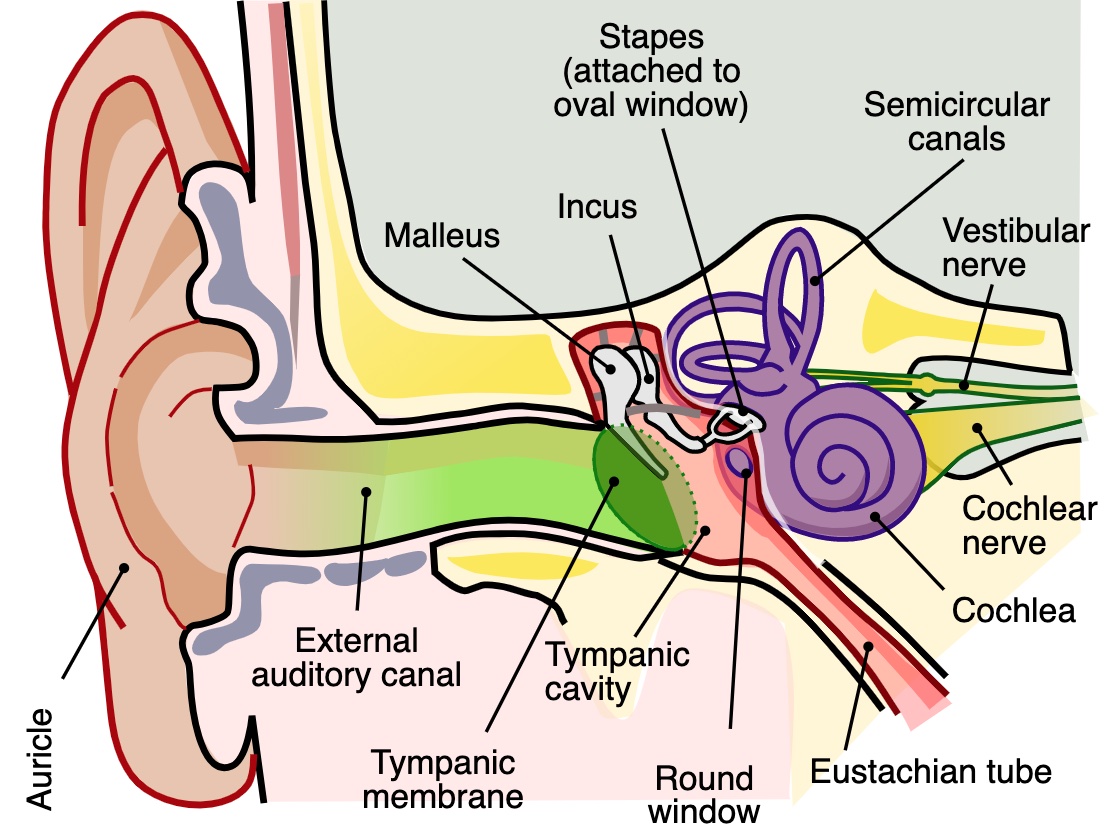Module 4: Hearing
How We Hear
Our ears are continuously carrying sounds (sound waves) across the hearing pathway. We hear sounds in the air when they travel from our outer ear into the eardrum, pass through to the middle ear, continue to the inner ear, and finally the auditory centres of the brain. Here the sounds are interpreted and recognized. Hearing is a very complex process. Let's look at these different parts of the pathway and breakdown where a hearing loss can occur.

The Anatomy of the Ear: outer ear (shown in green), middle ear (in red) and inner ear (in purple).
Outer Ear
The part of the ear we can easily see is known as the auricle. It is shaped like a partial cup to collect sound and channel it into the auditory canal. Sound waves travel through the auditory canal, or the outer ear, to the eardrum. Hearing loss can occur in the outer ear through a wax blockage or a puncture of the eardrum.
Middle Ear
The middle ear is made up of three tiny bones which could all fit on a baby’s fingernail. These bones amplify the sound as they send them to the cochlea. Hearing loss occurring in the middle ear is usually because of a build-up of fluid which interferes with the conduction of the sound waves. This is known as a conductive hearing loss.
The middle ear is also connected to the nose cavity, so when you have a cold, mucus can back up into the middle ear cavity. This feeling of not being able to hear clearly is a little like having a conductive hearing loss.
Inner Ear
The inner ear is made up of a snail-shaped structure, the cochlea, which contains fluid and tiny hair cells that are the receptors for sound. The hair cells are activated by the different types of sound waves that send an electrical signal up the auditory nerve to the brain. The brain interprets the sound, making sense of the sound waves the ear hears. A hearing loss in the inner ear is known as a sensorineural hearing loss. At this time, surgery cannot repair the damage done to the hair cells, so this type of hearing loss is permanent.
Even mild background noise makes it more difficult for people with hearing loss to understand speech. Hearing aids can help improve how sound is presented to the ears, but making sense of sounds in a noisy environment is a complicated process. Classrooms can be noisy sometimes, and it can be difficult for a person with a hearing impairment to understand what is going on and how to respond.
Watch this video for an overview of the hearing pathway: